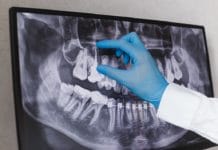Evaluation of Self-Help Cognitive Behavioural Therapy for Children’s Dental Anxiety in General Dental Practice by Sarah Bux, Jenny Porritt, and Zoe Marshman, studies the effects that guided self-help cognitive behavior therapy has on children’s dental-related anxieties at a dental office near low-income areas in London.
No dentist nor hygienist will argue that some children are nervous when they come into a dental office, and without being addressed, that fear may continue into adulthood. Adults who have an innate fear of the dentist do not go to the dentist, and their health and quality of life suffer. Conscious sedation and anesthetics are helpful in many situations but do not address the root anxieties and fears that someone experiences.
Classic Problem
It’s a classic problem that stems from normal thinking patterns. Fear of the unknown and fear of pain are natural cognitive responses when placed into a new situation or environment, and these responses instinctively keep us self-aware and alive. Parents usually explain what a dentist is there for before a child’s appointment but sometimes can’t answer all the questions a child may have. It’s difficult to explain what will happen in a dental appointment when you aren’t sure about it yourself.
A culturally significant amount of children all over the world have dental-related anxiety, which Bux, Porritt, and Marshman have reported that around ten percent of English children are anywhere from mildly to severely anxious before the dentist. Most studies that test the Cognitive Behavior Therapy (CBT) approach have happened in specialist offices, in the cases of oral surgery or orthodontia. This is the first study that takes place in a general dental setting that studies the positive effects the behavior modification can have on a child’s outlook, which will then, hopefully, have a positive effect on their long-term dental future.
Cognitive Behavior Therapy
Cognitive Behavioral Therapy uses positive self-talk, distraction, relaxation techniques, and exposure-response prevention to acclimate a child to the environment of the office and the instruments used for procedures and the actual procedures themselves. The procedures in question are routine hygiene appointments, restorative treatment with accompanying injections, and extractions. CBT has proven to be a great deterrent of anxiety in children when it comes to the more serious procedures, so logic dictates that it should have tremendous value in a general dental setting.
The Therapy
In this study, the children were given CBT treatment before an appointment and then questioned after to gauge the effects on their level of anxiety. This was done twice for each child in the study and each child came from a family considered to be from a lower socioeconomic status. The study used a program created by parents, children, dental professionals, and therapists: Your Teeth, You’re In Control.
The program parameters include many logical conventions. Convince the children that everyone is nervous before going to the dentist and that what they are feeling is normal and even healthy. Once they understand that, you hand over the reins of control to the children, hence the program title.
It is their teeth and they do have control to tell the clinician to stop, for example. Work with the child to come up with a code-word or hand gesture to communicate with the dentist or hygienist that they need to stop for a minute. Sometimes having the dental staff sign a pro forma contract promising to stop when asked is efficient when a promise isn’t. A contract is binding, after all. Then given them anxiety-reducing options, such as listening to their own music or watching a certain show if your office has a TV in the operatory. A stress ball has been used, for example.
Afterward, ask the child to describe what went well about the visit and plan a small reward along with the parents. The reward can vary. Many American dental offices have treasure chests with small toys for the child to choose from after the appointment. Some children would rather have extra minutes with the TV or a later bedtime for the evening. Negotiate a proper reward for proper behavior.
Children’s Response
Before the first appointment, after checking in, the children and their parents were given a handout, or a paper-based self-help resource, with suggestions and examples on how to relieve stress and a statement on how everyone is anxious. The steps and details of dental procedures were described, and anxiety levels were measured. A dentist or hygienist then went over the information with the parents and children again before beginning any procedures.
After the appointment, anxiety levels were measured based on the CEDAM test, which is a seventeen questions test created to specifically and quantitatively measure a child’s anxiety. The CEDAM test is a fourteen item self-report measure that is worded to give the child even more control in the dental environment and gauges their feelings, amount, and kind of intrusive and anxious thoughts, and exactly what made them feel that way.
Conclusion
This resource significantly decreased the reported amount of anxiety felt by the children and is a great benefit to dental practitioners all over the world, not just in London. Working with children can be difficult in every sense of the word, and any help is welcome. Using this low-cost CBT model will not only help you help the kids, but will bring you closer to your patients and your community.
Lastly, it should be noted, further testing and evaluation should be done to increase the efficiency of the model.











